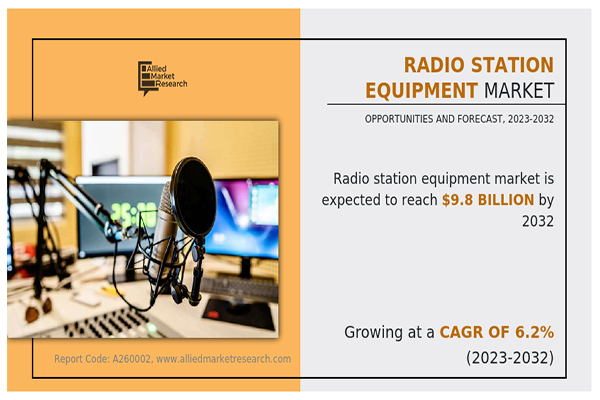The term “radio station equipment” typically involves the studio equipment used for recording sounds and creating audio documents, and the broadcasting station equipment used for transmitting radio waves. This equipment plays a pivotal role in refining, recording, and transmitting audio content, facilitating the airing of news, talk shows, music, advertisements, and other informative or entertaining material for the audience. It includes antennas, transmitters, microphones, audio processing units, mixing consoles, headphones, and various automated systems.
All these elements are crucial for transmitting content to audiences via radio waves or digital broadcasting methods. These tools are fundamental in ensuring radio stations operate smoothly and efficiently, enabling them to deliver high-quality and uninterrupted broadcasts to their listeners.
Advanced Technologies In Radio Equipment:
- Remote broadcasting:
Historically, radio stations were restricted in their ability to cover geographically accessible events. However, with the advent of broadcast solutions, broadcasters can now manage events from anywhere.
Portable kits, featuring compact mixing consoles and top-notch microphones, empower broadcasters to establish temporary studios at locations and broadcast live, high-quality audio by using the Internet. This technological innovation has proven valuable in covering many events including music festivals, breaking news, and sports events. It provides listeners with a real-time and immersive experience.
- Integration of AI:
As technology progresses, AI is increasingly integrating into various industries, including radio broadcasting equipment. AI-powered tools can automate repetitive tasks, create content, and analyze data.
For example, radio stations can employ AI algorithms to scrutinize listener data, extracting valuable insights into audience preferences. These insights enable stations to customize their programming to better align with the interests of their listeners.
Moreover, AI voice assistants like Google Assistant can assist broadcasters in searching for content, managing schedules, and even delivering news on air. With ongoing advancements in AI technology, its role in radio broadcasting is anticipated to elevate both creativity and efficiency in the industry.
Popular Trends In The Radio Station Equipment Industry:
The radio industry, though trailing a few years behind other sectors in embracing cloud technology, has witnessed an increased demand accelerated by the effects of the pandemic. In the past, the introduction of cloud technology primarily raised concerns about potential communication breakdowns and issues related to content storage and security.
As these systems have evolved and gained wider acceptance, the previous concerns have faded away, and the benefits of the cloud—such as scalability, rapid iteration, and the shift from capital expenditure (CAPEX) to operational expenditure (OPEX)—have emerged as compelling arguments on their own.
Presently, the cloud is increasingly becoming the norm for new installations, although there persists a mix of on-premises equipment used in a hybrid configuration. This hybrid setup is particularly prevalent in developing countries where challenges related to diverse connectivity are yet to be fully resolved.
The evolution of digital broadcasting systems has significantly transformed radio as a medium, particularly in how radio content is generated, distributed, and consumed by users. As a result, radio has significantly increased in complexity by offering numerous supplementary services beyond audio content. These additional services include providing metadata, synchronized slideshows, and video clips to enhance the overall listening experience.
Consequently, radio services have evolved from linear transmissions, extending beyond the traditional route from the transmission mast to the end-user. Now, audio files can be instantly accessed or stored locally, allowing for time-shifted playouts. This advancement in accessibility makes radio services more convenient for listeners, liberating them from strict adherence to broadcaster schedules.
Recent Developments in The Radio Station Equipment Industry:
The global radio station equipment industry is dynamic and experiencing various technological developments. Frontrunners across the sector are implementing novel strategies like new product launches, mergers, partnerships, acquisitions, and many more to maintain the top position in the industry. For instance, the installation of a forty-foot antenna and accompanying equipment on the rooftop of the Loyola Science Center has presented new opportunities and expanded horizons for the Student Amateur Radio Club and their research collaboration with HamSCI.
The antenna system comprises a tower housing a Skyhawk High Frequency antenna designed for 28, 21, and 14 MHz frequencies. Additionally, it incorporates VHF/UHF satellite and microwave antennas, some equipped with rotating mounts. The new equipment consists of versatile all-mode transceivers, heavy-duty controllers, desktop microphones, speakers, and various components enabling students to efficiently operate ham radio units.
To conclude, the global radio station equipment industry is gaining momentum due to advanced technology and heightened demand for online streaming. And it is expected to reach even higher in upcoming years.















